Expanding for more effective and expansive network infrastructures is becoming crucial, especially considering the progress in fiber optic communication. The development of high-density MPO fiber optic networks has led to the widespread use of fiber push cables. These assemblies are also intended to ease establishing connections, reduce the time taken to install, and provide a suitable environment for the current rising demand for data communications. This document outlines the main features and benefits of MPO trunk cable assemblies, including functional considerations, main technical parameters, operational aspects, and their service life in the context of the evolution of network structures. This context is interesting for professionals just starting their careers and IT specialists involved in applying data centers’ work. Hence, understanding how strategically important this set of components is within the chain of trunk lines will allow one to adapt much better to the dynamic world of digital communication.
Table of Contents
ToggleWhat Are MPO Trunk Cable Assemblies?
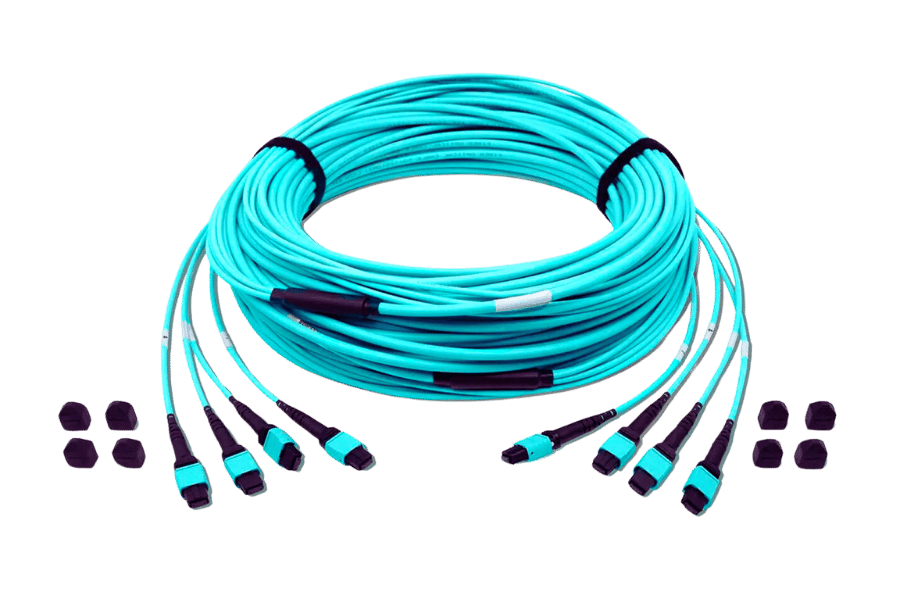
MPO bundles of cables are high-density structured cables for links that interconnect and consolidate multiple optical fibers into one single connector casing. They are rated for between 12 and 144 fibers that utilize a compact footprint for space efficiency and minimization of signal loss in high-density environments. These envelope connectors have the unique feature of a push-pull coupling mechanism, which significantly simplifies and speeds the mating of optical fibers. Such architecture allows easier installation and expansion of data centers while maintaining high efficiency in data rate and signal quality, making MPO trunk cables a priority for contemporary high bandwidth networks.
Understanding the Fiber Optic Technology Behind MPO Trunk Cables
The structure of MPO trunk cables adopts the latest fiber optic designs, with the possibility of extensive data transmission in a small design. The central element of such wires is an optical fiber, a slender line of plastic or glass used as a light waveguide. These fibers have been classified into types mainly based on their performance features, which include standard singlemode and multimode fibers designed for different applications. Single-mode fibers are more suitable for long distances because they carry bulk bandwidth, whereas multimode fibers are used for short distances but are less expensive. Mass-produced fibers are manufactured with extremely low attenuation and low dispersions, which guarantees a prohibitive loss of signal of data transmitted through them. Furthermore, the hollow alignment pins of MPO connectors and the precisely made ferrules enable the installation of high-density connections and enhance system performance and scalability in data center applications. This blend of technology provides the capability to transfer large volumes of information promptly while ensuring adequate connectivity, which is essential in contemporary network infrastructures.
Differences Between Single Mode and Multimode MPO Trunk Cables
The key differences between single-mode and multimode MPO trunk cables are based on their fiber and performance standards. In single-mode MPO cables, the core diameter is reduced to approximately eight to ten microns, which allows light to propagate exclusively in one plane or mode. This architecture increases the distance of transmission to up to kilometers while also increasing the bandwidth capabilities, which makes it usable for long-haul and telecommunication transmission. However, the multimode connectors’ core diameter is about 50 or 62.5 microns; thus, multicore light can traverse them. Therefore, these can transmit up to 600 meters at high speed but are only for use in a LAN and database and not at long distances. Moreover, the larger core diameter makes aligning the two ends correctly easier, decreasing the errors. Hence, in choosing either of the two, some prerequisites have to be met; they include the distance needing to be covered, the price range, and the amount of data able to be transferred.
Key Components of MPO Fiber Cable Assemblies
MPO fiber cable assemblies comprise multiple components that, when combined, ensure proper functioning in a network setting. These components include the MPO connector, fiber cables, alignment pins, and subassemblies – specifically the ferrules and the outer cable jacket. The MPO connector has been explicitly made for densely packed connections where multiple fibers, often from 8 to 24, can be contained within a single interface. The fiber cables, which may be either single or multi-mode, are used to carry data signals. Alignment pins are necessary components for making sure that the two connectors butt against each other accurately so the signal loss is improved and performance is optimal. Ferrules provide mechanical precision and protection of the ends of the fiber, usually made from ceramics or metals. Lastly, the outer cable jacket provides elemental protection. It adds structural strength to the assembly by preventing other maladjusted movements of internal components enclosed within, increasing the operational capabilities of the assembly.
How Are MPO Trunk Cables Utilized in Data Center Environments?
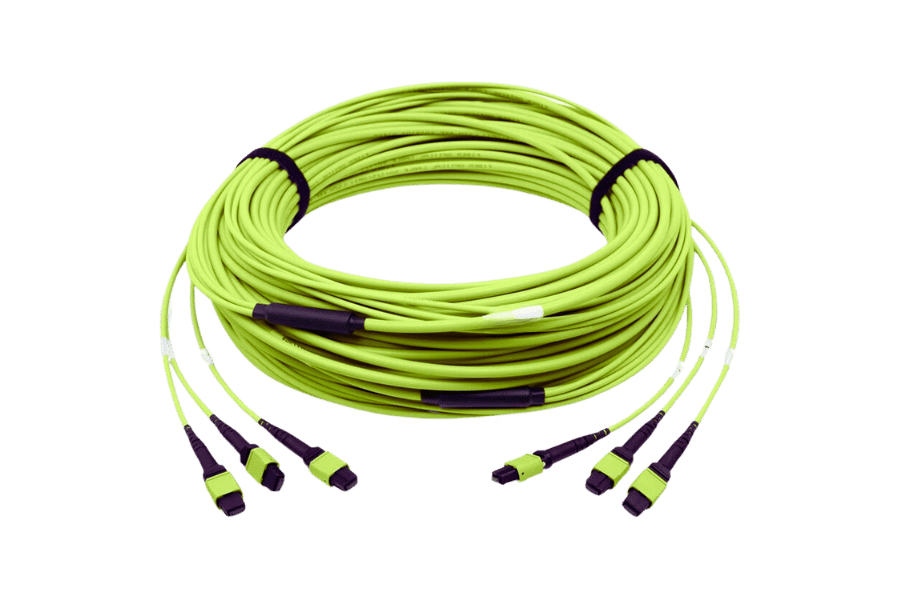
Role of MPO Trunk Cables in High-Density Fiber Networks
MPO trunk cables are indispensable in increasing the density of fiber networks, especially in the case of data centers, which are focused on space and efficiency. As noted by companies like Cisco, Corning, and CommScope, these cables enable the rapid building of backbone infrastructure by reducing a multitude of fiber linkages into a minimal physical size. This is made possible by a single cable that contains several fibers, which results in the network connections interface being greatly simplified. The MPO trunk cables provide the scaling capability, which enables the data center to grow its networking capability in stepped increments whenever the bandwidth requirement rises. This also ensures the accuracy of the networks, further improves performance, and reduces the amount of energy consumed during transmission to facilitate data flow at great speeds, which is a requirement for modern-day applications.
Benefits of Using MPO Trunk Cable Assemblies in Data Center Applications
MPO trunk cable assemblies have multiple benefits during the implementation in a data center due to their efficiency, scalability, and performance. First, they help with high-density connectivity, which is important because the space in the data centers is limited. This efficiency in space usage leads to improved organization and management of the MPO fiber trunk cable systems, hence less congestion in the work area and improved maintenance. Second, using MPO trunk cables reduces the time required to install most terminations, which in turn allows quick deployment of the network, which is also less labor intensive. This feature also facilitates future network upgrades or expansions to cater to increasing bandwidth capacity without needing to rewire the whole network. Lastly, due to low insertion losses and enhanced and accurate fiber alignments, these assemblies allow for high rates of data transfers, which are significant in cloud computing and extensive data requirements. Therefore, having these cables in a data center will allow that particular data center to have robust and scalable networking systems.
Which Factors Affect Insertion Loss in MPO Trunk Cable Assemblies?
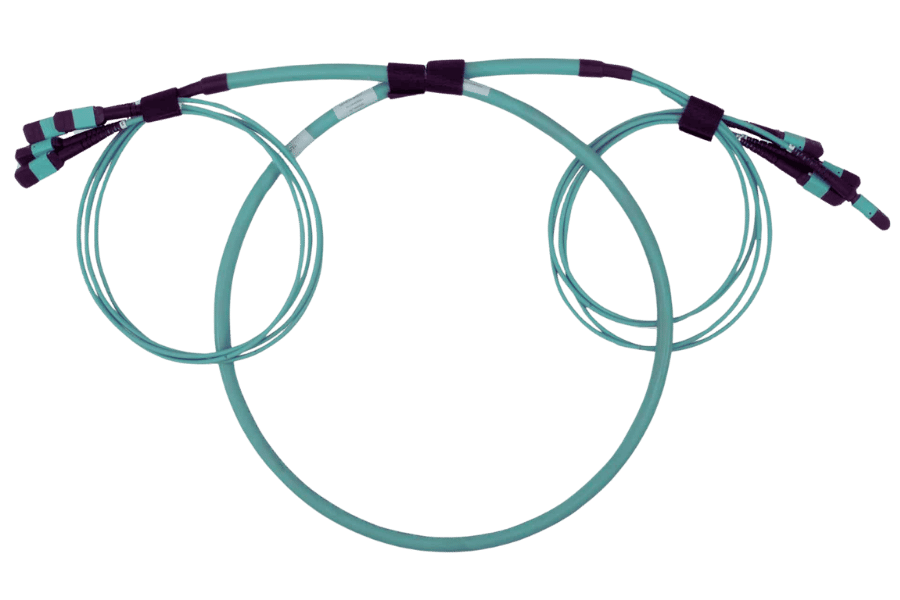
Understanding Insertion Loss and Its Impact on Fiber Performance
Insertion loss is a significant factor in the efficiency of MPO trunk cable assemblies, and it represents the amount of signal power lost by inserting elements such as connectors or splices into fiber optic links. Two main factors determining a system’s insertion loss are its connector alignment and fiber optic core geometry, including the connector polish quality. When connectors interfere at the interface, signal loss and increased back reflection when the fiber core’s diameter differs, causing light to scatter or be lost entirely. Weak or uneven polishing at the end-faces of the connector also causes poor back reflection, which in turn leads to more significant losses of esthetics. These issues may, in turn, influence the effectiveness of a network, and for data centers, the ultimate data rate and signal quality are of supreme importance. Thus, maximal performance of a fiber optic network, characterized by minimal insertion loss, is achievable through optimal alignment of the fibers and accurate termination of the connector.
How MPO Connectors Influence Low Insertion Loss
MPO connectors do allow low insertion loss because of several features and innovations. Modern MPO connectors come integrated with an alignment system that provides accurate core-to-core contact during mating, which minimizes losses. High-density multi-fiber connections reduce the number of components and connections and deliver minimal losses, enabling efficient data transmissions compared to traditional fiber solutions. It is also finished materials that impact the addition of losses: ferrules and alignment pin assemblies. Also, advanced manufacturing processes like precision polishing and high standards of quality prevention methods further improve the efficiency of the components by reducing the flaws and providing an unobstructed optical path. In that regard, the precision of details and the incorporation of technology give MPO connectors a low insertion loss, which is crucial to practically high-speed and dependable fiber optic networks in multifaceted structures like data centers.
Techniques to Minimize Insertion Loss in MPO Trunk Cables
MPO trunk cables experience a minimum insertion loss through some measures that require strategic approaches to optimize network performance. First, proper alignment of the MPO connectors by using quality Senko MPO components and connectors and appropriate termination practices is critical. This includes utilizing alignment sleeves and specially machined alignment pins to ensure the fiber cores are aligned accurately. Second, employing advanced cleaning techniques, including using compressed air, lint-free wipes, and dustless cleaning, is vital in minimizing damage that exacerbates Evans signal loss. Third, high-quality cables possessing constant core geometry and low core material loss reduce probable aberrations in the transmitted signal. Besides, regular use of OTDR and insertion loss test equipment is also essential to detect problems and control the degree of these problems for consistency of performance. By adopting these approaches, data centers can minimize fiber optic network insertion loss, thereby providing efficient services and operation of the network.
What Are the Advantages of Multimode OM4 Over OM3 in MPO Trunk Cables?
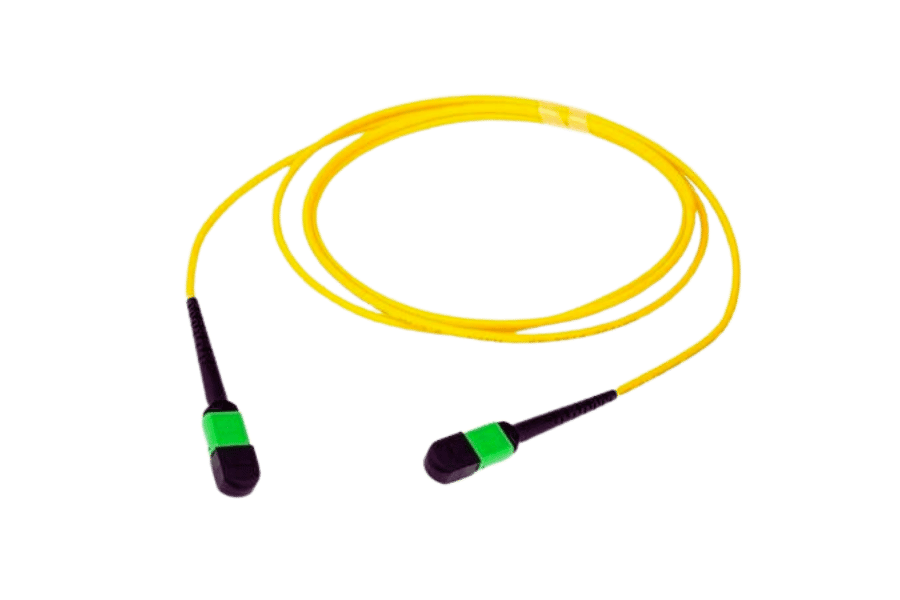
Comparing Multimode OM4 and OM3 Fiber Optic Technologies
Compared to OM3, OM4 multimode fiber optic technology has some significant bandwidth, circumference, and performance advantages. For starters, OM4 fibers are built to reduce attenuation, thus increasing the distance and speed of data transmission. If OM4 can support 40/100 Giga-Bit Ethernet to 550 meters, OM3 could only stretch that to a maximum of 300 meters. This increased distance capacity would suit OM4 for usage in big data centers, which need a high bandwidth. In addition, the OM4 multiphase fiber has less modal dispersion and frequent difficulty with multimode fibers, improving signal quality over distance. These features render OM4 suitable when network updates or upgrades have a future-proof strategy goal with affordable and reliable data transfer.
Best Use Cases for Multimode OM4 Fiber Cables
Multimode OM4 fiber cables are best for scenarios where the data connectivity and the network design are top-notch. First, they are well-fit for use in data centers with 40/100 Gigabit Ethernet that extends a few kilometers apart without degrading the performance. Secondly, high-density server farms also use OM4 cables because they are suitable for applications that use parallel optics, which are high-bandwidth interconnects. Lastly, these cables are beneficial in using high-performance computing (HPC) resources where low latency and high data rates are the key to successfully adopting the technology. These situations show how OM4 cables can address the needs of the ecosystem of modern networks with high data rates.
How do you select the custom length and features for MPO trunk cables?
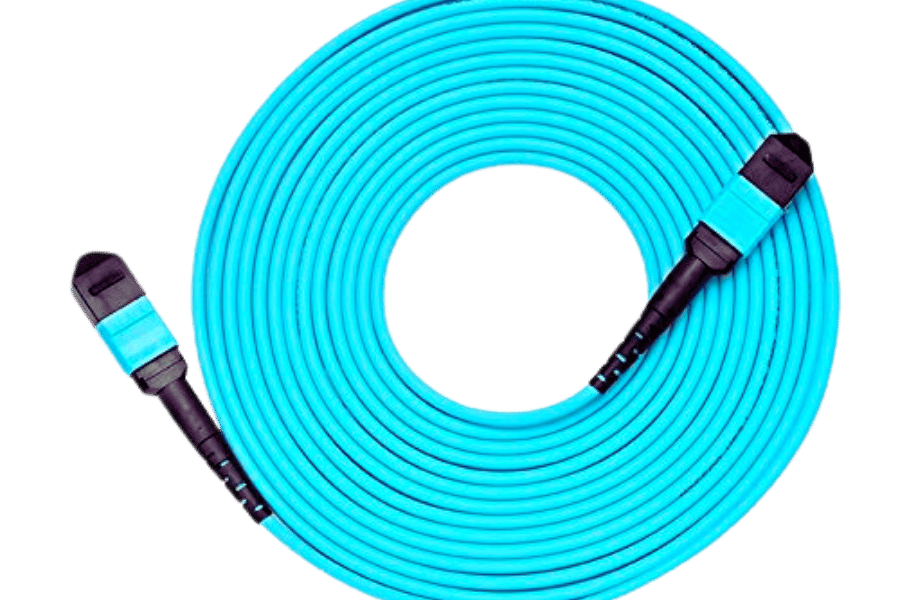
Importance of Customizing Cable Length for Specific Fiber Deployments
It is fundamental for any specific fiber deployment to order the cables in shop f-cable size. Otherwise, the network would not be optimally efficient in terms of cost. Through my research, I found that the right-sizing of cable lengths helps reduce the over-abundance of any particular cable, thereby eliminating congestion and performance issues; as a result, signal and Magnetic cables are interference-free. Ordering cables with custom lengths also helps with cable management, thus making maintenance and upgrading easier. Some sites like Corning, FS, and Cables And Kits mention that custom cable kits solve the problem of having distinct space schemes and specific equipment ports, which helps to enhance the reliability of data transmission and improve the structure’s neatness.
Choosing Between LSZH, Plenum, and Ruggedized Options
The prevention of any hazards necessitates the careful selection of the appropriate cable jacket type. Low smoke zero halogen cables are perfect for use indoors within enclosed areas because they emit less corrosion fumes when burnt. From that understanding, such materials are ideal around regions where humans reside and use enclosed structures and transport systems. Conversely, plenum-rated cables are used in air-handling areas such as ducts or plenum areas. In case of fire, cables below the floor or above the ceiling are required to prevent cable insulation from burning and give off minimal emissions, such as smoke, so they should be used when minimum emissions are needed. Lastly, ruggedized cables are strong enough to be used outdoors or in industrial surroundings. They are more robust and can withstand incredible abuse like extreme temperatures, moisture, and even abrasion. Such differences can simplify the selection process, ensuring the safety and operability needs of the organization are met.
Understanding Polarity B and Other Configuration Options
The B Polarity is one of the established cabling methods for fiber optic connections, which is essential for adequately aligning signal paths in duplex intercoms. In this configuration, the transmit (Tx) and the receive (Rx) pairs are crossed to enable the transmission of information. According to Corning, FS, and Cables And Kits, one should not underestimate the importance of the correct choice of polarity as it dramatically impacts the stability of the network and prevents some problems with connectivity. The TIA/EIA-568-B industry standards speak to how proper polarity means output stays on the transmitter ends and is received by the appropriate ends of the receivers. Other options when designing the fiber optic system include ensuring it runs on the current networks, meeting regulatory requirements, and planning for future systems growth. Such configurations enhance the performance and reliability of the systems while at the same time supporting the optimal use of data throughput by reducing possible cross-connect issues.
Reference Sources
Frequently Asked Questions (FAQs)
Q: How would you define MPO trunk cable assemblies and their significance in high-density fiber networks?
A: MPO trunk cable assemblies are multi-fiber cables with connectors known as MPO. These cables are essential in high-density fiber networks, enabling seamless data transfer in data centers and other areas with high fiber counts. Furthermore, they are the future as they facilitate cost-effective data transfer by supporting 100G Ethernet and higher speeds.
Q: What joint fiber counts are available in MPO trunk cables?
A: Fiber cables are manufactured in a variety of configurations. The most commonly used cables are the 12-fiber, 24-fiber, 48-fiber, 72-fiber, and 144-fiber MPO cables, which are specialized in the trunking and cascading distribution of fiber cables and are in high demand. These options provide flexibility in designing high-density fiber networks and allow scalability as network demands increase.
Q: What’s the contrast between singlemode and multimode OM3 MPO trunk cables?
A: Singlemode differs from multimode OS2 and OM3 MPO trunk cables in the core size and transmission distance. Single-mode fibers feature a more significant core and cannot transmit data more than a specific range, making them more suitable for short-haul usage. Multimode OM3 fibers feature a smaller core and are designed for multimode usage for ranges not exceeding that at which data centers and enterprise networks operate. One of the frequent colors of OM3 fiber is aqua, while OS2 singlemode fiber is usually yellow.
Q: What are the breakout cables, and how do they relate to your MPO trunk assembly?
A: Breakout cables facilitate the conversion of MPO connectors and adapt them to particular fiber connectors such as LC, SC, etc. They also facilitate joining MPO trunk cables to equipment with single fiber ports. Breakout cables are essential for high-density fiber networks as they allow interconnections of different network equipment types and help save space in data centers.
Q: What is the role of MPO adapters in high-density Fiber Networks?
A: In high-density fiber networks, MPO adapters are essential building blocks. They facilitate the joining of trunk cables that utilize MPO connectors and aid in connecting trunk cables to patch panels or cassettes. The various MPO configurations or adapters are designed to support the needed fiber count and the requirement of fiber polarity.
Q: What are the advantages of using APC (Angled Physical Contact) connectors in MPO trunk assemblies?
A: There is a higher return loss performance when using the APC connectors in the MPO trunk assemblies than when using the UPC connectors. This is especially vital in singlemode applications where signal reflections must be minimized. Green-colored connectors for APC applications are the most prominent in high-tech optical networks where signal interference is of great concern.
Q: How can the deployment of MPO trunk cables be done faster in Data Centers?
A: The multi-fiber MPO trunk cables allow for the fast deployment of the wires. Such cables can be pre-terminated and tested in a factory setting, so there is no room for errors, and they reduce installation time. The case allows for combining cassettes, panels, or ruggedized MPO fan-outs that help deploy quickly in significant multi-fiber habitats such as data centers.
Q: Where can one find helpful sources when buying and applying MPO trunk cable assemblies?
A: While purchasing and applying MPO trunk cable assemblies, valuable sources include the cable assembly manufacturers, their catalogs, technical specifications, and design manuals. The best way to do this is to include detailed documents for best practices for purchasing fiber cords, including the standards from TIA and ISO documents. Working with a fiber optic cable or network infrastructure specialist is also helpful for those looking to purchase MPO trunk cables with the right length and width and ensure they are installed correctly.
